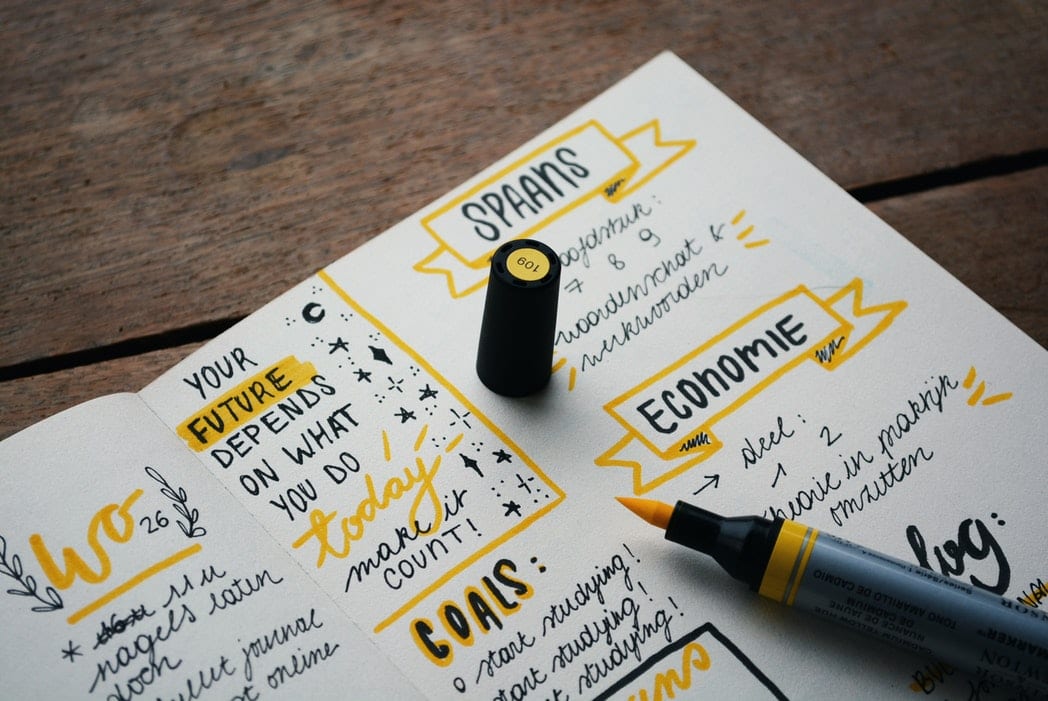Nail Down Email Management: 16 Tips for Team Collaboration

Table of contents
In Deloitte’s Global Human Trends Report of 2017, 94% of respondents reported that “agility and collaboration” are critical to their organizations’ success. However, only 6 percent agreed to being “highly agile today.”
Collaboration is at the heart of success in today’s world. Even the most organized teams deal with plenty of everyday technical and communication obstacles to doing business. Executing projects can get really tricky without cracking the formula to effective collaboration.
The good news is that the move has started.32 percent of the survey respondents in Deloitte’s study said that they are now designing their organization to be more adaptable and team-centric.
One of the most common and easy ways of collaborating is the email. But email can be a cause of major distraction and actually lower productivity if not handled intelligently. An average professional receives121 emails on a daily basis. If not managed well, emails can make us lose our minds!
Teams that manage to excel at email collaboration innovate and adapt better. The number of mistakes committed is also a few, as compared to a disjoint network of teams.
However, collaboration is also very difficult to achieve. Learning about project management, in general, can help you with some email management best practises.So here are some tips for you to make email collaboration a breeze for your organization:
Table of Contents
- 1. Be purpose-driven
- 2. Make sure everyone is on the same page
- 3. Transparent communication is key
- 4. Set clear goals
- 5. Delegate work through emails
- 6. Identify strengths of the team
- 7. Immerse collaboration into your culture with repetition
- 8. Offer psychological safety
- 9. Help people build relationships
- 10. Let creativity thrive
- 11. Address conflicts immediately
- 12. Reward and recognize good work
- 13. Celebrate team success
- 14. Offer feedback at every step
- 15. Use visualization to improve performance
- 16. Put people first
1. Be purpose-driven

Passion is about finding yourself, purpose is about losing yourself.
This is Hayley Liebson’s take away from a recent Product Summit she attended at New York, which covered how much purpose actually matters for high performing organizations. True fulfillment comes from not only doing something one enjoys but when it serves a larger purpose of creating meaningful value.
Research proves that purpose fuels profits. If people drive meaning from their work, they are much more likely to stay motivated and engaged.
For all the people in your team, as well as in cross teams, you need to make them aware of the larger purpose of the project and what exactly it aims at achieving.
For example, defining the larger purpose of keeping customers happy will help your support team understand how critical handling support emails fast is.
Give them practical examples of what happy customers can mean to the growth of the company, their individual careers and how their contribution is extremely valuable in making that happen.
Recommended read: Features to Look For in a Customer Email Management Software
2. Make sure everyone is on the same page

We all know the drill. You call for a meeting to discuss a new project, let’s say a new product marketing strategy. Then you discuss the steps that need to be taken, define target audiences, define the types of communication that need to go out, assign the writers with work, create demo videos, define email and social media campaigns divide the work among people, set deadlines and so on.
When you meet again the next week, the most dreaded scene can be when people are lost, or worst, pointing fingers at each other.
I am sure all of us have been a part of projects where we have either been too involved than someone else in the same team or not involved at all. Either way, it is not a good place to be at. No one wants to be run through the progress of two months in two minutes.
Effective collaboration occurs when every team member involved in the project is updated with the way things are shaping up.
The information needs to reach every person at the same time, and in the same manner. It really does not matter whether it is someone from marketing, someone from the product team or someone in hardcore tech.
Successful project completion requires everyone’s involvement, and they can help to the best of their ability only when they know what is actually happening on the ground.
When you’re collaborating via email, you’d want to try out shared inboxes – they ensure everyone on your team has access to the same information in real time, among other things.
3. Transparent communication is key

In a recent survey,57% of project managers cited poor communication as the leading cause of project failure.
When a network of individuals and teams are coordinating and collaborating towards achieving common goals, robust communication is absolutely essential. This, however, does not mean creating interruptions whenever a thought arises. It means that there is room to converse and clear the air whenever doubts creep up and come in the way of progress.
Ensure transparent communication takes place across all levels of teams and functions. This is crucial to encourage participation among employees. It will also help create a sense of belonging among employees. Receiving only filtered information or not getting updated about everyday developments can create a sense of alienation.
There are many other email tools that act as an open medium for communication, keeping all the essential information at a display. Tools like a Google Workspace group collaborative inbox can be used to keep everyone involved in a project aware of meetings well in advance, stay updated on agendas, progress and also interact and learn from one another
4. Set clear goals

A study by Mark Murphy, author of Truth at Work: The Science of Delivering Tough Messages, Hiring for Attitude tracked 4,182 workers from 397 organizations. This study found that only15 percent of employees strongly agree that their goals will help them achieve great things.
Goal management is the foundation of high performing individuals and teams. Without clear goals, employees will be left confused and directionless. Using Google Groups for transparent communication can help teams align with these goals.
Once the long-term goal is known to everyone involved in a project, short-term goals need to be stated. These short-term goals should be realistic, and employees and teams need to be given all the tools that they might need to accomplish them, with minimum error and maximum efficiency.
As a project manager, you will play a major role in establishing achievable goals for everyone. To ensure effective collaboration, involve the teams in setting their goals and arrive at them with mutual consent.
Make sure there is a strong sense of accountability that gets created towards achieving these goals. This is possible through regular follow-ups, feedback and offering guidance in a case of any hiccups on the way.
Add goals to your work management tool so that people can see what they need to do. This will act as a constant reminder for them and also keep them clear of their responsibilities.
5. Delegate work through emails

Most teams use an external application or tool to assign tasks to their group members. The result is employees constantly shifting between multiple platforms to get work done.
Wouldn’t life be simpler if your Gmail let you assign tasks to specific people, make changes in it as you go and close it once it’s done?
Hiver is a tool that enables this by converting emails into tasks that can be assigned to your team instantly. Not just that, you can also automate email delegation based on rules.
6. Identify strengths of the team

Behind every successful project are individuals and departments with specific strengths, the contribution of each mattering in a significant way.
The best example I can think of is in a movie. If you are one of those people who sit down to watch the credits at the end of a movie, you can see the number of departments, teams and the amount of hard work and collaboration that goes behind creating a blockbuster.
Great teams are built with people who have great talents and skills. The best teams have diversity, so many different strengths appear within the team: strategic thinking, creativity, organization, relationship skills, detail-orientation — you name it.
The best leaders not only recognize these strengths, they enable individuals to work within them and ensure team members appreciate one another.
~ Cha Tekeli, Chalamode, Inc.
Everyone in teams will have different personalities, weaknesses, perspectives, and ideas. Identify these unique strengths of your teams and bring them to the forefront.
Each and every contribution should matter and everyone should feel valued and important. Undervaluing or ignoring someone’s work might make them lose their whole sense of purpose to coming to work every day.
7. Immerse collaboration into your culture with repetition

A study by Standford found that even the mere perception of working collectively on a task can supercharge our performance.
A similar finding emerged from a joint study between the Institute for Corporate Productivity and Rob Cross, Edward A. Madden Professor of Global Business at Babson College. This study found that companies that promoted collaborative working were 5 times as likely to be high performing.
Everyone has a different style or preferred mode of working. Some people may be very good with team work, some may prefer working in silos, while some might want a balance of the two. No matter what everyone’s preferred working style is, they need to be reminded that collaboration is the way to go. This expectation needs to be set right from the very beginning.
As a team leader, make it very clear that effective collaboration has to happen and working together is crucial. Everyone should know exactly how much work is expected out of them and the amount of hours/effort that needs to be put in. They also need to be clear of how much their contribution matters, and what tasks their specific role entails.
8. Offer psychological safety

Effective collaboration is all about communication. But not everyone is comfortable in speaking one’s mind in a room full of people. This might hamper the larger cause and not bring some great ideas to the table.
This is why team leaders need to work towards offering psychological safety to everyone involved in the project. Psychological safety refers to the feeling of comfort while expressing an opinion openly among team members. It is the feeling that gives the confidence to share one’s own ideas in front of a group of people without any emotional barrier such as fear or intimidation acting as a hindrance.
According to Gallup’s data, only three out of ten workers in the U.S. strongly agree that their opinions seem to count at work. However, by moving that ratio to six in ten employees, organizations could realize a 27 percent reduction in turnover, a 40 percent reduction in safety incidents and a 12 percent increase in productivity.
It is of paramount importance to ensure that employees feel safe enough to be able to be their best creative selves. Encouraging psychological safety needs to come from project managers like you, largely by being attentive listeners and setting the path for transparent communication. Set great examples through your own behavior, and encourage employees at every step to be the best version of themselves.
9. Help people build relationships

A recent U.S. survey highlighted that the top engagement condition for 79 percent of respondents was their relationship with co-workers (SHRM, 2015). If collaboration needs to happen within teams, the people involved need to like each other. This depends on how far their personal relationship has been developed.
If participants in a group activity do not know each other, or worse, are not fond of each other, success can seem like a distant dream. This is why they need to meet in formal as well as informal scenarios, to be able to bond and get to know each other. Not allowing time for this can prove to be a costly mistake.
Most projects start in a hurry and in the need to deliver, team managers put people together and ask them to get to work asap. Without giving the group time to know each other and genuinely connect, this will eventually fire back in some way or the other.
As a team leader, you are bound to get better results if you give that time and space to your group to get acquainted. This will not just help in personal bonding, but also develop a common understanding about the project.
10. Let creativity thrive

Just working on goals without any interaction can become monotonous and boring. New ideas need to come to the table every now and then to keep the team mentally alert and creatively stirred.
Perhaps this is why 82 percent of executives surveyed by Forrester agree that companies benefit from creativity. Among those benefits include increased revenue and greater market share.
Brainstorming at regular intervals can bring about significant improvements to work projects. Figure out ways to make people bring out their creative best at meetings, gatherings or informal setups. Encourage them to think outside the box and allow team members to question and discuss the work freely.
11. Address conflicts immediately

The better able team members are to engage, speak, listen, hear, interpret, and respond constructively, the more likely their teams are to leverage conflict rather than be leveled by it.”
~ Runde and Flanagan
When a group of people works towards achieving common goals, conflicts are bound to arise. As and when they do, they will look up to the team lead to make a judgment.
If you see any such conflict, resolve it out through communication on the spot. You can also identify potential conflict before it arises by paying attention to team dynamics, body language, and dialogue between participants. Delaying such conflicts will continue to increase the friction between team members, which will hamper the progress and quality of the project at hand.
Conflict is going to be inevitable during project management. You need to get to the bottom of it as soon as it arises, clear misunderstandings and move ahead. The longer you wait to set things straight; the sooner the project will suffer.
If there are any changes that need to be made as a result of the conflict, highlight them in your email collaboration tool immediately. Take a stand and make sure everyone is happy with the final call.
12. Reward and recognize good work

According to 2017’s Tiny Pulsesurvey, only 26 percent of employees feel strongly valued at work. This is because validation and recognition aren’t made a part of the culture through rewards.
Rewards and recognition have proved to be an effective strategy to boost employee morale and make them feel valued. When it comes to inspiring people, global studies have proved that there is nothing that comes close to recognition, not even higher pay, promotion, autonomy or training.
For those who have genuinely gone out of their way to achieving outstanding results, make sure you recognize them openly. You can share an appreciation email marking everyone or make an announcement in small informal setup.
Rewards need not always be monetary. Even a small “Good Job!” can help promote a positive, productive and creative working environment. Such small acts can help foster a culture of high performers.
13. Celebrate team success

The strength of the team is each individual member. The strength of each member is the team.
~ Phil Jackson
While it is important to reward individuals for their contribution, teams should also be given frequent shout-outs for their achievements. Make sure you occasionally tell your teams and departments how they have set high standards for the rest to follow.
When a certain target is reached, celebrate with the entire team and tell them how brilliantly they have managed to achieve great heights with collaboration. Everyone in the team needs to feel like they matter, and also feel proud to be a part of the group. They should be proud of one another and wish good things for everyone personally, as well as professionally.
So make sure you celebrate the hard work of the team every time there is an achievement. This will build the foundation and strengthen the collaborative spirit.
14. Offer feedback at every step

To make any collaboration tool work, it has to be continuously measured. Regular feedback empowers people to reset goals if required, make iterations and also feel rewarded for their work.
43% of highly engaged employees receive feedback at least once a week. The competitive generation of today continually seeks out for coaching and learning opportunities from their seniors. They do not mind knowing exactly how they are doing.
Analyzing and conversing about the pros and cons of set processes also helps to create a supportive environment.
It should be your foremost goal to make sure you follow up, not just with your clients but also with your team members. Offer them open feedback at every step, and keep all the team members updated. Choose your words wisely while you do that. This will ensure that people stay reminded of what is needed, and they are on their toes.
15. Use visualization to improve performance

Most great athletes, celebrities and high performers in various fields use visualization as a part of their training, preparation, and goal setting techniques. There has been a lot of research in this field that proves that when someone visualizes a goal, neurons in their brain fire up in a way similar to when they are actually doing the work physically.
Visualization can work wonders for collaboration. People who follow directions with illustrations do 323% better than those who follow text-only directions. Get your teams together to brainstorm and put up those ideas in some form for everyone to see. Whiteboards, sticky notes, hand-drawn timelines, powerpoint visuals etc. can remind your team of the work and keep them inspired.
Be it rough sketches or full-scale presentations, provide your team members with the opportunity to be able to see what the ultimate goal is, right in front of them. You can set timelines for each small goal in a visual way as well. This will prove to be a source of great inspiration and motivation for them to hustle.
16. Put people first

While the kind of collaboration tool that you use will be instrumental in defining the success of projects, it will not be the only source. Public and private sectors have invested millions of dollars in purchasing software, portals, and intranets with the intent of making their workforce communicate with ease. But collaboration is much more than just the technology that supports it. It is about the people.
More than technology, collaboration is a change in attitude, perceptions, and behavior of people. Successful collaboration is more a result of the right examples, and leadership than technology. It is a human issue.
Related posts
Why your support team deserve better than Google’s Collaborative Inbox
Share Gmail with your team — Do more together

































